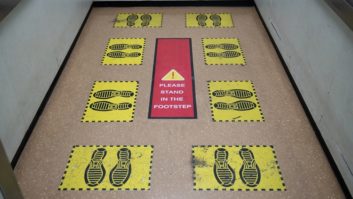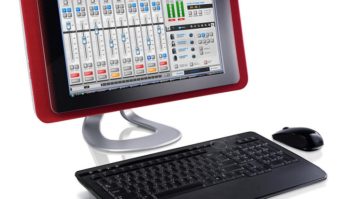
Alexandre Martinez is a pre-sales engineer at Netia.
CLARET, France — Broadcasters are always looking for ways to reduce their costs and increase their revenues, and a radio automation system upgrade can introduce an array of benefits that ultimately add to the bottom line.
An upgrade may take the form of a significant software update that addresses known issues or introduces new capabilities. Or it may be the complete replacement of a system that no longer meets the technical or functional requirements of the broadcast operation.
EMBRACE CHANGE
Even when there is a clear need for a system upgrade, many organizations resist moving forward with such a project. Though investment in new or enhanced technology may represent an unwelcome financial commitment, the idea of change itself is often the primary barrier to an automation system upgrade. With this approach, the broadcaster can wind up working with an obsolete system that dramatically reduces efficiency and productivity, in turn cutting into profitability. After all, time is money.
An up-to-date automation system enables a facility to take full advantage of the latest product features and capabilities, as well as bug corrections that improve functionality and reliability. Well-established vendors with widely deployed systems typically develop and roll out new versions of their automation systems that have been refined and enhanced to address requests from across their worldwide customer base.
The facility investing in an upgrade thereby profits from the lessons learned and challenges overcome in other installations. Oftentimes, the introduction of a lightweight client eases deployment and opens the door to simpler, faster, and more cost-effective system maintenance going forward.
With respect to specific functional improvements, it is essential to consider how new tools and capabilities within the automation system can support greater efficiency. At the front end of the workflow, for example, enriched ingest capacities can allow a radio station to record audio feeds over IP, which comes in handy for the capture of live web radio feeds for later broadcast. In the midst of production, more robust editing tools that support Virtual Studio Technology plug-ins make it easier for users to create higher-quality effects for promos and programs.
Another valuable enabler of efficiency is the ability to share content across a facility and across geographically dispersed sites, with all assets searchable and available for retrieval, incorporation into new clips or programs, and distribution internally or via broadcast and multiplatform outlets.
To this end, the automation solution must feature a graphical user interface that allows users — staff working locally or journalists and reporters working remotely — to keep track of assets, projects, and archives, whatever their location, and to mine data from any site’s database. In a globalized environment, in which an organization is spread across multiple geographic areas, the system must support metadata in different languages, as well as multiple-criteria research in multiple languages.
MAXIMIZE EFFICIENCY, QUALITY
Advances in mobility are also increasing the utility and value of automation systems, which today enable anywhere-anytime access to media so that the broadcaster can create more timely and engaging on-air content with better agility and lower costs. Working on virtually any device, the journalist in the field must be able to record, edit and publish an interview from the field. Mobility enhancements also aid engineering by giving technicians or the IT department the means to monitor and pilot any installation remotely.
Upgrades to automation systems also are accelerating multiplatform delivery. Allowing the broadcaster to drive numerous types of channels from a single ecosystem, the automation system can help users to raise the station profile and revenues by addressing a full array of platforms and maximizing audience coverage. With support for station-specific apps that engage listeners, automation makes it possible to better understand audience preferences and to be more effective in building brand loyalty.
By maintaining an up-to-date automation system, the facility also can ensure smooth integration with third-party systems as they evolve. Within the broadcast industry, the ability to integrate a facility’s automation system with third-party systems smoothly is critical to overall technical and operational maintenance. Through every update or upgrade of a third-party system, the automation system must continue to interface seamlessly and provide the functionality upon which daily operations depend.
Any new automation solution must come with an API, complete with documentation and tips for getting started, to allow for seamless integration into the ecosystem already in place. Using responsive web-based user interfaces on top of a service-oriented architecture, the broadcaster can easily perform various types of third-party integration. In addition to accelerating deployment, the absence of a heavy client reduces the need for training and makes for faster incorporation of freelancers into the production team. With access to an array of sophisticated tools, reporters in the field can begin producing content for broadcast purposes.
This move to a distributed architecture allows broadcasters to temporarily scale out system capacity as required for media processing, editing, rendering and publishing, in turn helping the facility to reduce maintenance-related costs. The integration of cloud-based processing into radio automation solutions also has had a transformative effect on how journalists and reporters work in the field.
By moving critical and computationally-demanding processing tasks to server-based engines in the cloud, an automation system can enable the mobile user to trigger and manage key operations such as transcoding, rendering, mastering, encryption, quality control and proxy generation.
In a highly competitive and quickly changing media landscape, broadcasters need to maximize their efficiency while continually increasing the quality and volume of content they offer to audiences. A radio automation upgrade yields these benefits, leveraging a distributed service-based architecture to deliver and maintain the up-to-date functionality essential to continued business success.
Radio World welcomes other points of view. Please send comments to [email protected].












